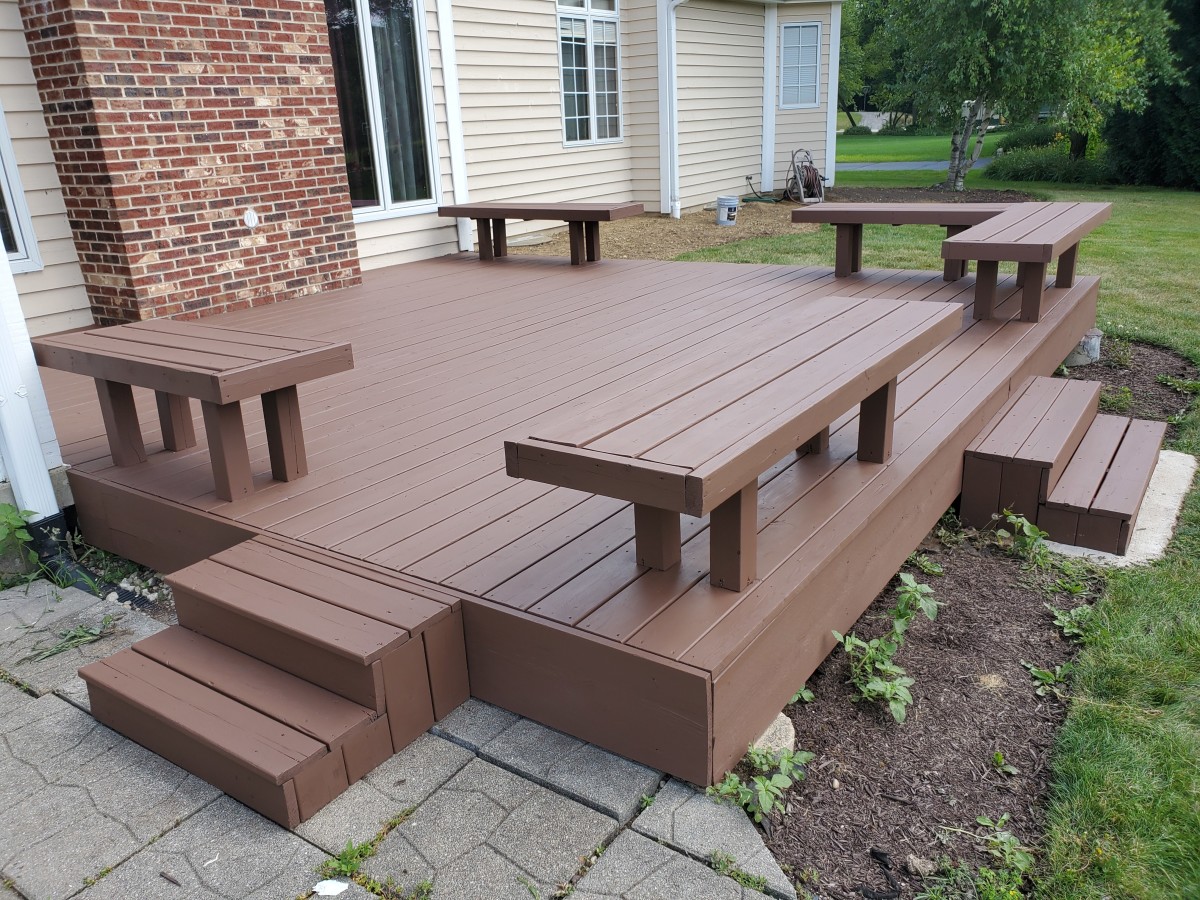Selecting the Right Deck Stain: Boost and Secure Your Deck
Selecting the Right Deck Stain: Boost and Secure Your Deck
Blog Article
A Comprehensive Overview to Different Kinds Of Deck Discoloration Techniques for Ultimate Protection and Visual Appeals
In the realm of deck maintenance, the art of discoloring stands as a critical step in the direction of both maintaining the stability of your outside area and enhancing its aesthetic allure. As we browse via the detailed globe of deck discoloration strategies, one starts to value the nuanced techniques that can make all the distinction between a sub-par finish and a perfect one. From the option of the proper discolor type to the precise application methods, each facet plays an important role in achieving that best equilibrium between protection and looks. Join us as we discover the secrets behind achieving the best deck discoloration results-- a trip where every brushstroke forms not just the surface area, however the extremely essence of your outside shelter.
Comprehending Various Kinds Of Discolorations
Different types of discolorations are typically made use of in the procedure of deck discoloration to attain different aesthetic and safety impacts. On the various other hand, semi-transparent stains provide an equilibrium in between color improvement and defense, permitting some timber grain to show through.
Toners include a tip of shade to the timber while supplying very little protection, making them appropriate for newer decks with much less wear. Comprehending the attributes and benefits of each type of discolor is essential for accomplishing the desired look and durability for your deck.
Picking the Right Discoloration Color
When considering the appearances of your deck discoloration job, the option of stain shade plays a crucial duty in boosting the safety high qualities of the selected tarnish type (Water-Based Stains). The color you pick can considerably affect the general look of your deck, as well as its capacity to stand up to the elements gradually
When choosing a stain shade, it's necessary to consider the existing color design of your home's exterior. Harmonizing the deck tarnish with the general visual of your property can produce a visually attractive and natural outdoor area. In addition, the shade of your deck stain can influence the temperature level of the deck surface; darker shades tend to take in more warm, while lighter shades mirror sunlight and remain cooler.
Moreover, the type of timber you are discoloring will certainly also impact just how the stain color shows up. Different timber types can interact with the discolor in different ways, potentially changing the final shade. It's advisable to evaluate the discolor on a little, unnoticeable location of the deck to make certain the color ends up as preferred before proceeding with the entire task.
Preparing Your Deck for Discoloration
To make sure a effective and resilient deck staining project, comprehensive preparation of the deck surface is important. Begin by cleaning the deck thoroughly to remove dust, crud, mold, and any kind of old finish or stain.
Evaluate the deck for any kind of harmed or rotten boards that need to be replaced. Hammer down any kind find out this here of sticking out nails and sand any type of rough locations to ensure a smooth surface area for discoloration. Look for any loose railings or steps that might require tightening or repair work.
As soon as the deck is clean, dry, and in good repair, consider applying a wood brightener to restore the deck's natural color and open up the wood pores for better tarnish penetration. Finally, safeguard any close-by plants, furnishings, or surfaces with plastic sheeting prior to proceeding with the discoloration process. Appropriate prep work is essential to achieving a professional-looking coating and making best use of the durability of your deck tarnish.
Applying Stain With Different Strategies
For a flawless and professional finish, the technique of using tarnish plays a vital function in boosting the appearance and toughness of your deck. There are numerous techniques you can use to make sure a reliable application of stain.
It is suitable for elaborate locations and getting to between deck boards. Back-brushing after rolling is suggested to even out the discolor and function it into the wood for better penetration.
Spraying is one more popular method, using speed and convenience of application, particularly for large deck areas. Whichever strategy you select, guaranteeing proper preparation and following supplier guidelines will certainly assist attain a durable and stunning tarnish surface on your deck.

Maintaining and Re-staining Your Deck
When it comes to re-staining your deck, the regularity depends on numerous elements such as the kind of discolor utilized, the climate in your location, and how much wear and tear your deck experiences. Usually, it is advised to re-stain your original site deck every 2-4 years to keep its defense and looks.
Before re-staining, make sure the deck is clean, dry, and complimentary of any kind of previous stain residue. Choose a top notch discolor that fits your deck's product and gives the wanted degree of defense.
Conclusion
To conclude, understanding the different kinds of deck spots, selecting the appropriate shade, effectively preparing the deck, using discolor with different strategies, and re-staining the deck and keeping are necessary steps for ultimate protection and visual appeals. By following these steps, you can make sure that your deck stays in top condition for years to come.
In addition, the shade of your deck discolor can influence the temperature of the deck surface; darker colors often tend to soak up more heat, while lighter shades show sunlight and stay cooler.
It's recommended to test the tarnish on a tiny, unnoticeable find out area of the deck to make certain the shade turns out as desired prior to proceeding with the entire task.

Report this page